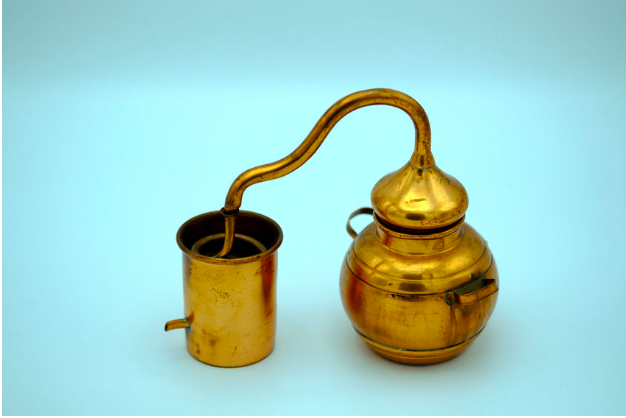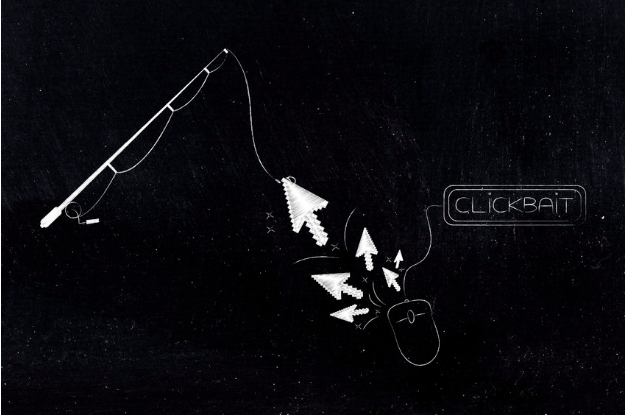 In many ways, the headline is the most important part of a blog post or article. Headlines spark action. They can make people click. An eye-catching headline on social media can draw tons of comments — many from people reacting off the headline alone.
In many ways, the headline is the most important part of a blog post or article. Headlines spark action. They can make people click. An eye-catching headline on social media can draw tons of comments — many from people reacting off the headline alone.
Headlines can also shape how people digest the message of a blog by creating context and expectations — all through a strong first impression.
But, most importantly, headlines tell us what we need to know in order to get invested. With so many distractions and options for reading content online, we need information that helps us choose how to spend our limited time.
The best headlines therefore serve as a promise to the reader about what they’ll get for their time. Never forget that a great headline acts like a bargain: “read this, and you’ll get something special or valuable or informative out of it.”
So how do you start to shape expectations and earn interest right from the headline? You can rely on a couple of tried-and-true formulas, as one option. You should also mull how accurately and succinctly your headline summarizes the central takeaway of your post.
To help you get started, here are three methods you can try in 2018 to write better blog headlines and earn more clicks, along with a few other tips.
Method 1: Distill Your Article Into a Headline by Gradually Dropping Your Word Count
 This first method is time consuming and involves some hefty thinking, but after a few tries you’ll be able to do it subconsciously in seconds.
This first method is time consuming and involves some hefty thinking, but after a few tries you’ll be able to do it subconsciously in seconds.
In fact, most of us already try to use this method when writing headlines, we just don’t think about it. Getting practice makes your approach more deliberate while teaching you how to skim your content for an accurate central takeaway.
The method works like this:
- Identify a central thesis, argument, idea or purpose of the article
- Identify two to four main sub-points or pieces of evidence for the main point
- Use the above two items to summarize your article in less than 200 words
- After writing your summary, edit it down to 100 words
- Edit your 100 word summary down to 50 words
- Edit your 50 word summary into a single sentence
- Take your sentence-length summary and condense it further into a headline below 90 characters
- See if you can condense the message into just a few words using less than 65 characters
- Re-read your 200 word summary to see if you left anything important out, then come up with an alternative <70 character headline
- Repeat steps 7-9 to come up with a few alternative options
This method may seem tedious, but it’s good practice for teaching your brain to recognize thought processes we take for granted. Translating a huge chunk of text into a short summary involves lots of mental processing, but we are able to do it in seconds thanks to our wonderful minds.
At the same time, our minds are trying to do a million other things when we write headlines. Using the above method keeps us focused on a central idea, and it can steer your headline writing back to a more logical place if you ever feel lost.
Method 2: Use Headline Formulas That Earn Tons of Clicks
 Publishers like Buzzfeed, Upworthy and Bored Panda don’t earn millions of clicks a week by coincidence. They have blog writing down to a science, including the practice of writing juicy headlines that generate stampedes of clicks.
Publishers like Buzzfeed, Upworthy and Bored Panda don’t earn millions of clicks a week by coincidence. They have blog writing down to a science, including the practice of writing juicy headlines that generate stampedes of clicks.
Based on research and performance data, here are a few of the most successful three-word headline phrases these publishers use to generate huge, highly engaged audiences:
- will make you
- this is why
- can we guess
- only X in
- the reason is
- are freaking out
- X stunning photos
- tears of joy
- is what happens
Other common traits of popular headlines include:
- Using numbers to imply a list (“10 Reasons Why…”)
- Referring to the audience in the second-person (“You Won’t Believe…”)
- Implying emotion (“This Hilarious Piece of Advice…”)
- Lead with a strong, commanding action verb (“Take Control of Your Day by…”)
There are also many other tried-and-true blog headline writing formulas worth experimenting with.
Now, when looking at these lists, some may refer to this data-based approach to writing blog titles as “making clickbait.” Those people would be correct.
Even though clickbait-ish headlines have become a punchline, they still work. A post like “Watching This Baby See Her Dad for the First Time Will Make You Smile” sets a concrete promise to the reader for what they’ll get out of the post.
Our cynicism towards headlines like these comes from the fact that we click on these posts only to feel deceived. E.g.: “No, #16 did not surprise us, Buzzfeed, because it’s literally the first thing we thought of.”
So, when writing headlines with this approach, make sure they still accurately reflect the actual content of your article. Which brings us to method #3.
Method 3: Compromise by Combining Headlines From Methods 1 and 2
 Rand Fishkin of Moz offers a handy way to resolve the conflict between headline descriptiveness and viral appeal.
Rand Fishkin of Moz offers a handy way to resolve the conflict between headline descriptiveness and viral appeal.
He suggests creating at least one headline using each of the above methods. Then, try to combine them.
Here’s an example:
- Descriptive Headline: “Implied Consent Laws Demand Choice Between Incriminating Yourself and Mandatory Jail Time”
- Sensational Headline: “This One Weird Trick Could Get You Out of a DUI, But You May Spend the Night in Jail!”
- Combination: “Here’s What Happens When You Delay Your Breathalyzer Test in an Implied Consent State”
Now, an even better headline might read: “5 Reasons to Delay Your Breathalyzer Test in an Implied Consent State”. Why? Because they then know they don’t have to read the whole article to get the gist. They can just read the five subheadings in quick succession.
That particular headline requires the article to be broken down in list format, though, so consider the how you might use the structure of your article to create an appealing headline before you start writing.
A Few Other Tips to Help You Write Better Blog Headlines
- Look up synonyms to replace weak words with stronger ones or multiple words with a single descriptive one
- Use strong verbs
- Avoid using “being” verbs like “is” and “are”
- Use CTR to gauge how clickable your headline is; make note of high benchmarks to learn from them
- If you have a high CTR but a high bounce rate for your content, that’s a sign your headlines need to more accurately reflect your post content
- Beware of spam trigger words, especially when sending emails
- You can A/B test multiple headline options when creating promoted social media posts or email campaigns; study the results to find patterns for successful headlines
- When in doubt, come up with at least five alternatives and ask someone for their input!
Headline writing is a tricky dance, but when you recognize what’s important, it becomes that much easier. Keep your audience’s valuable time in mind, promise them something great, don’t misrepresent the post, and study your own data to discover what works!
Leave a Reply
You must be logged in to post a comment.